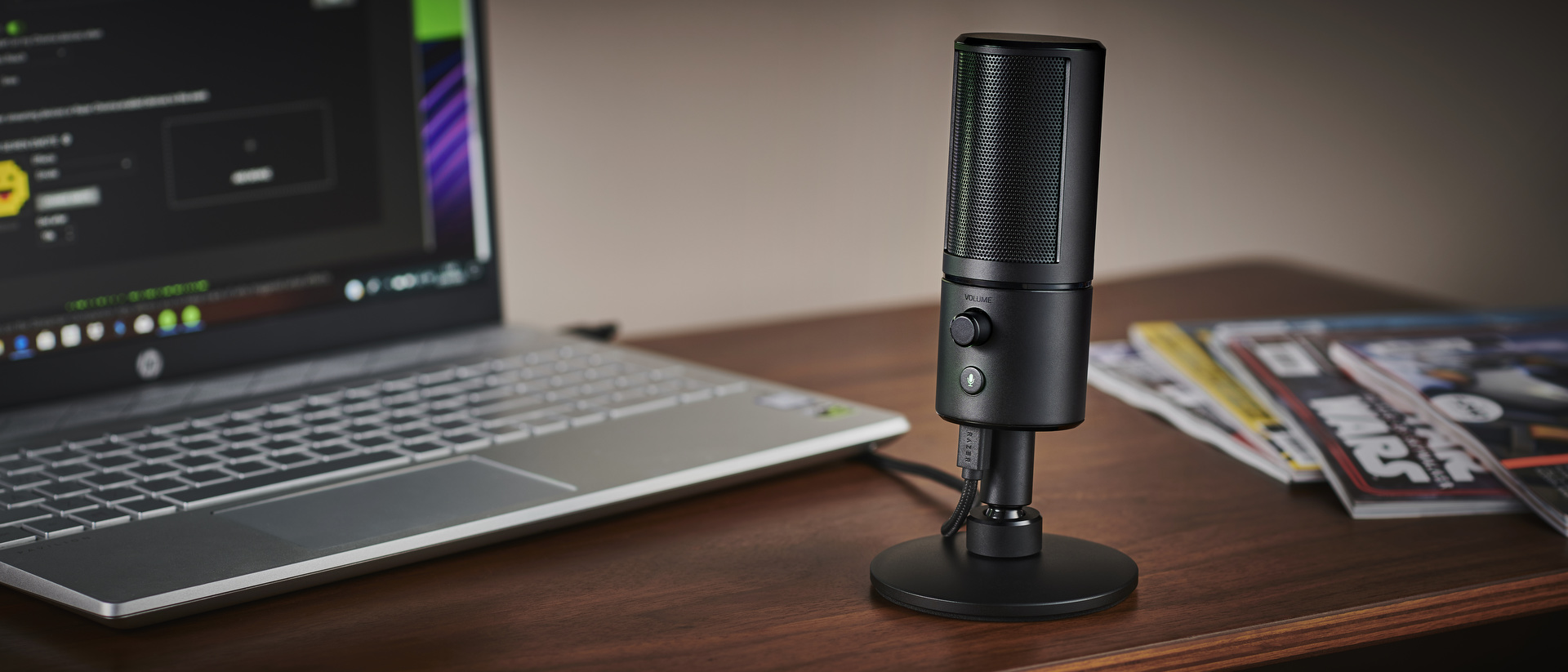TechRadar Verdict
Razer’s newest Seiren gaming mic is a quality product with a unique, fun gimmick that unfortunately isn’t worth the asking price.
Pros
- +
Good audio quality
- +
Customization is awesome
- +
LED display is bright and clear
Cons
- -
Very niche target audience
- -
Performance doesn’t warrant the price
- -
Software is annoying
Why you can trust TechRadar
Razer’s coming for streamers with this one. It’s not entirely clear which streamers it’s coming for, though. The Razer Seiren Emote shares a chassis with the slightly older Razer Seiren X, a perfectly good starter microphone for the budding Twitch streamer, which clocked in at one hundred dollars – still more expensive than the excellent Blue Yeti.
So, the target audience is a bit confused. That’s okay, though; the Seiren Emote does bring one very special feature to the table. Behind the black microphone mesh, an eight-by-eight grid of RGB LEDs is hidden, lighting up on command with all variety of emojis, patterns and gifs.
This low-res display is on the opposite side to the volume control dial and mute button, with the central conceit of the product being that the display faces the camera while the streamer speaks into it from behind, with fun little icons popping up for their audience to enjoy.
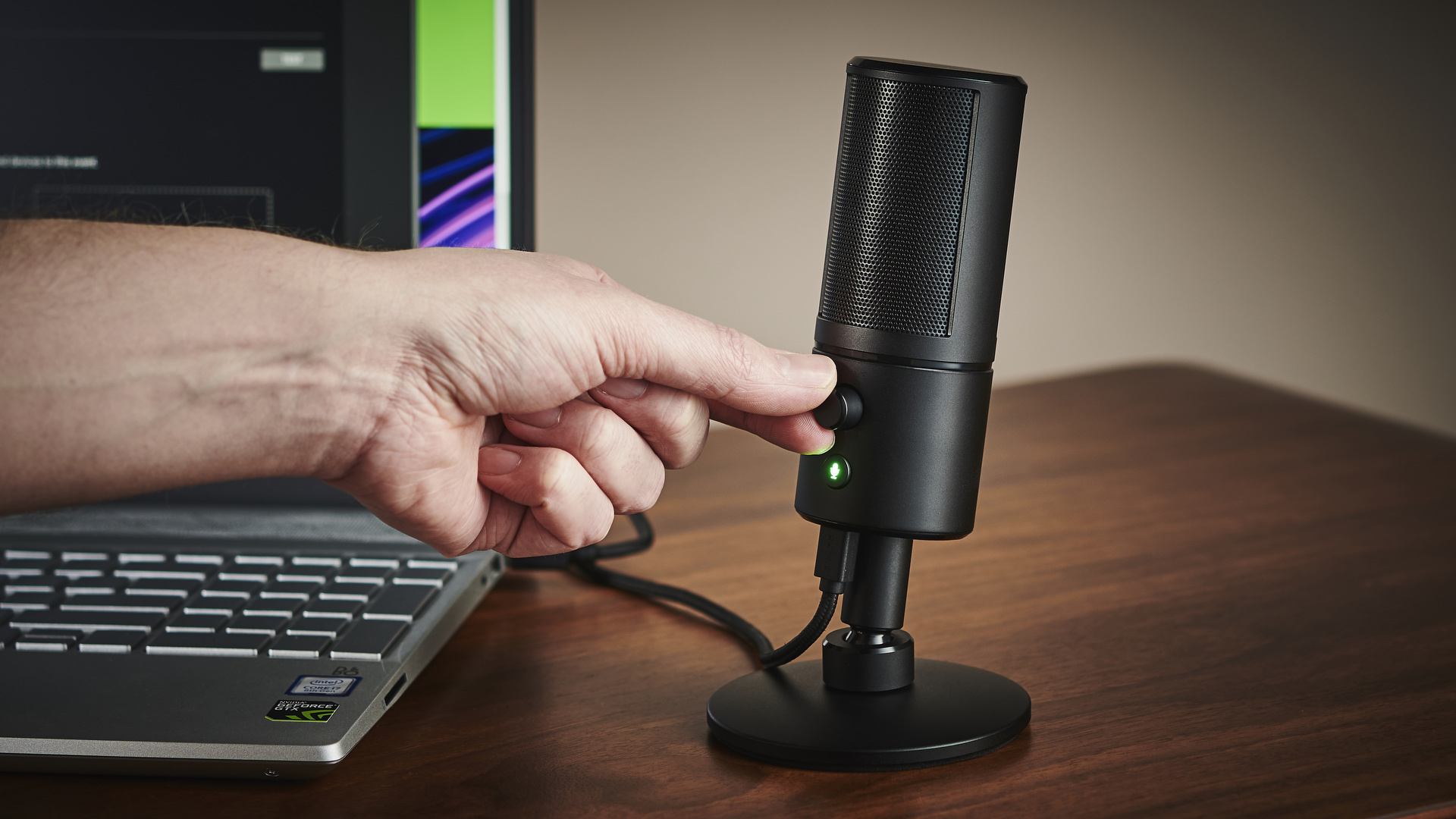
Price and availability
The Seiren Emote is almost twice as expensive as the Blue Yeti at $180 (or £170 in the UK, around AU$260 in Australia), and while it does pack an updated condenser microphone with a hypercardioid polar pattern (as opposed to the Seiren X’s supercardioid pattern), it otherwise doesn’t do much performance-wise to justify that price increase.
As you might have guessed, those with the money to splash on a high-end streaming setup will likely want a more advanced mic with superior control and sound quality.
Design
Taking the Seiren Emote out of the box is a distinctly unexciting prospect, particularly if you have already seen a Seiren X before. Razer’s woeful spelling of Siren aside, the Emote is initially indistinguishable from the Seiren X, coming with a sturdy round base and a choice of short, straight neck or a longer, flexible gooseneck, both of which screw onto the base of the microphone itself with ease.
The hardware is pretty simple to set up; just unbox, assemble the three pieces and plug it into your PC with the provided USB cable.
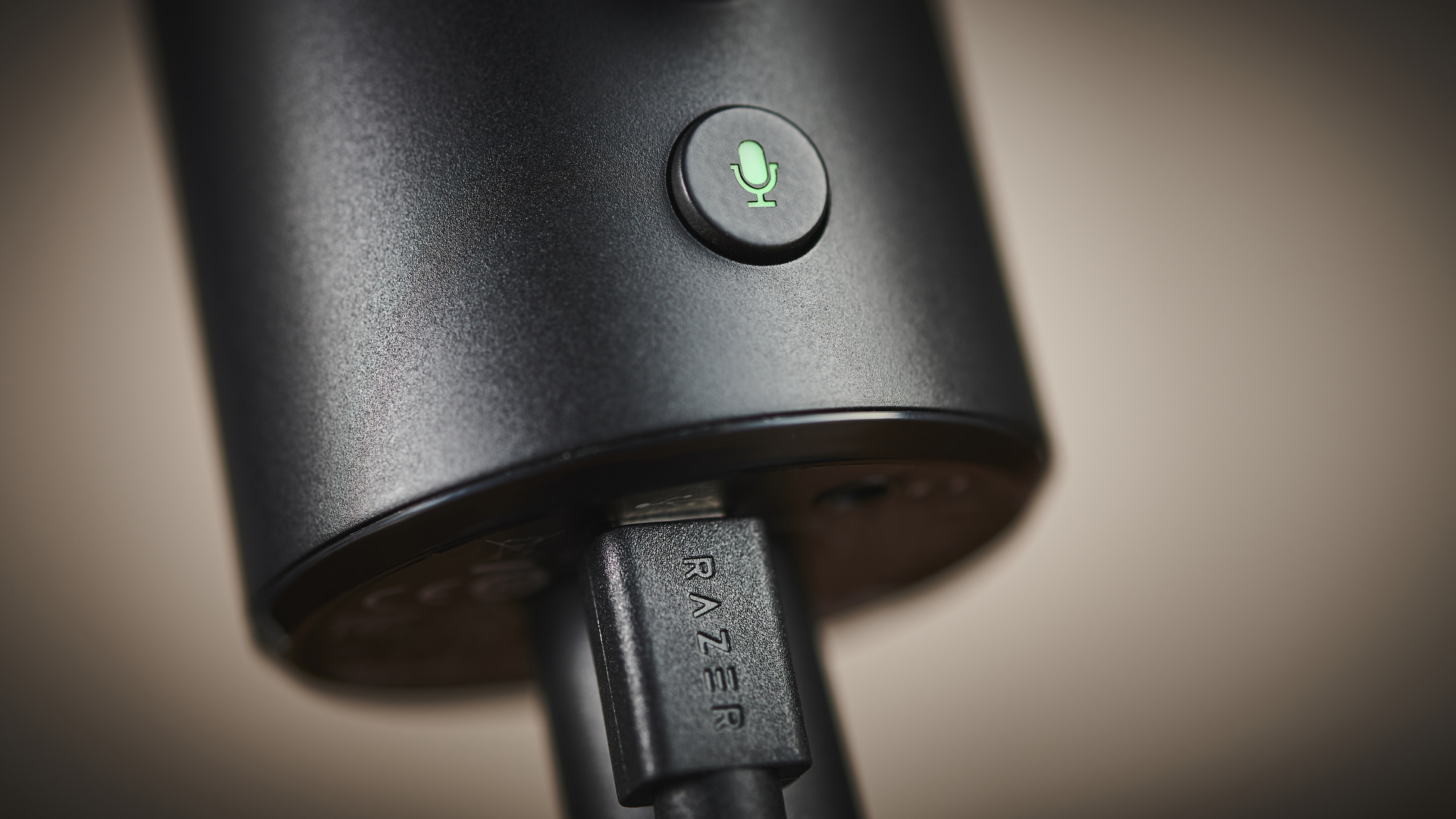
Of course, this being a Razer product, Synapse immediately raises its ugly head. Razer’s software can be frustrating at the best of times; being told right off that bat that even the new Synapse 3 Beta can only adjust the volume settings on the Emote is like a slap in the face.
No, you’ll also need to install Razer’s new Streaming Companion App, which also works with the half-ridiculous, half-incredible Razer Kraken Kitty Edition headset’s adorable pointy RGB ears.
Credit where credit is due; the companion app does have an excellent array of customization options. It can link either to Twitch or Streamlabs, and allows users to set up a wide variety of 8x8 responses to various occurrences in a livestream.
A new Twitch follower can lead to a pixelated happy face bursting into life, while the more cynical user can display a green dollar sign upon receiving a donation on stream.
While experimenting with it, we were even able to set up an alert that displayed an eggplant emoji anytime someone in our Twitch chat posted rude slang for male genitalia. Truly, we live in a glorious utopia of live entertainment media.
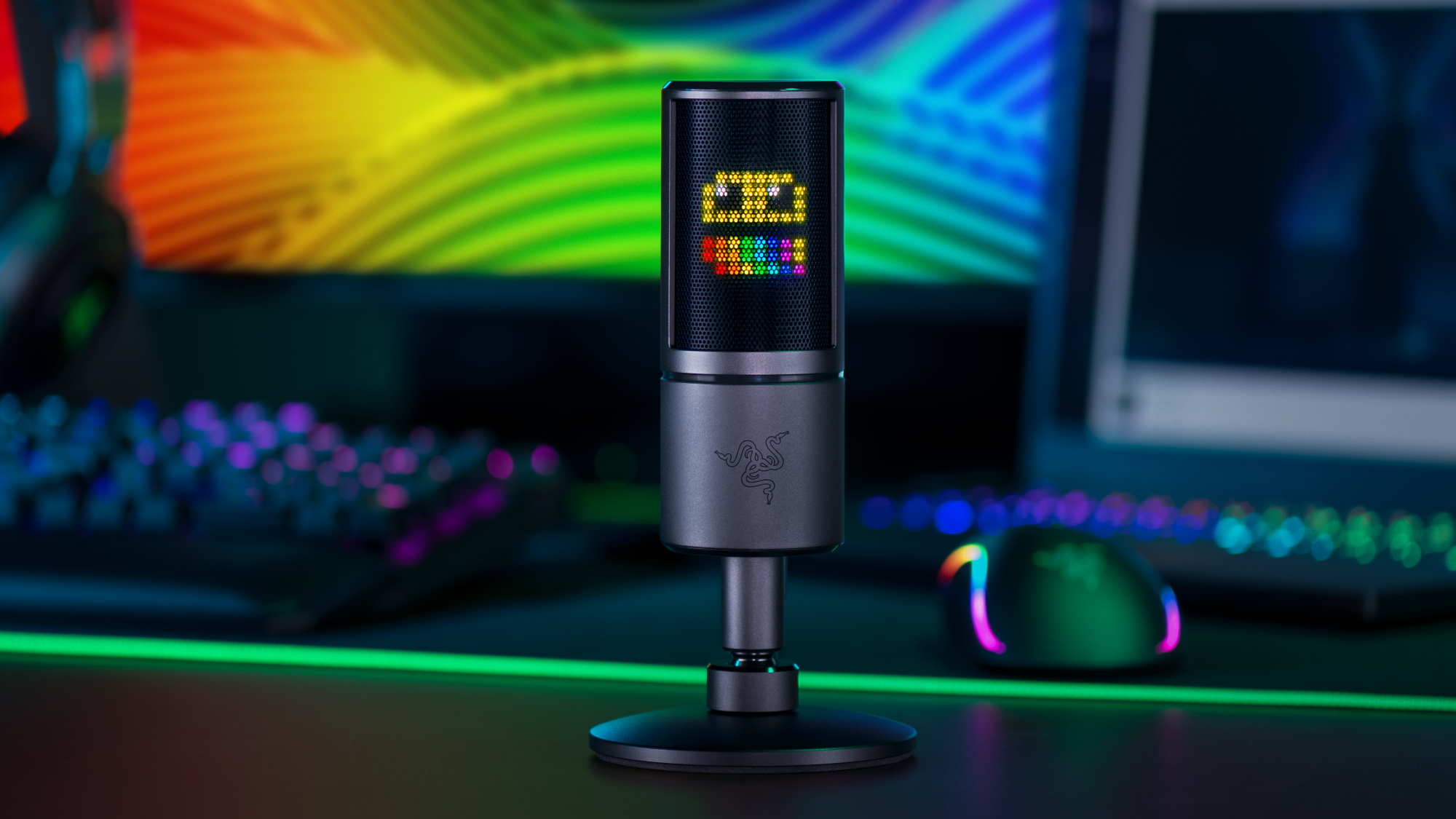
Performance
The biggest problem here is the value. Does the Razer Seiren Emote perform well? Yes, reasonably so: the lack of a proper gain control dial on the physical microphone is a shame, but the shock mount functions well and vocal recordings come across crisp and clear.
We mentioned earlier the shift from supercardioid to hypercardioid polar patterns; for the uninitiated, what that effectively means is that the Emote’s microphone should pick up sound from a tighter area of space than the Seiren X.

This doesn’t work too well in practice, unfortunately. Attempting to set up the Razer Seiren Emote in a position where it wasn’t in the way but was visible to a webcam left us with limited options, resulting in its polar range also encompassing my keyboard.
Keyboard clicks were audible wherever we positioned it, which was a shame since it did an excellent job of picking up our own deep baritone.
General background noise isn’t too bad, although we did occasionally notice distance loud sounds cutting into the audio. It’s alright, sure, but we can’t bring myself to be too excited about it.
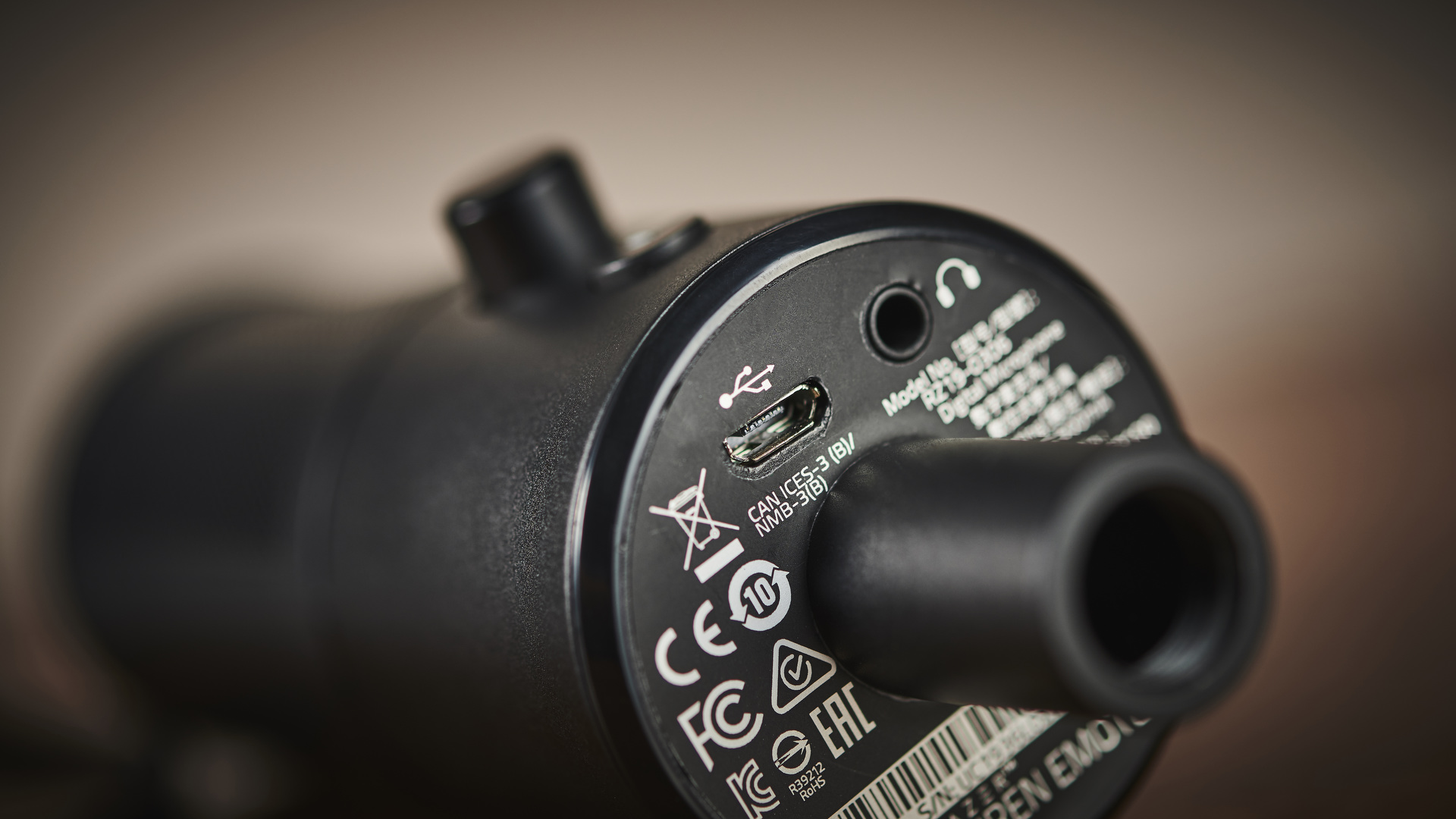
Verdict
The real question here is whether or not you personally buy into the LED-display gimmick. While we did have fun programming the Emote to display animated fire and poop emojis (like the mature, well-adjusted people we are), we still don’t think it’s a gimmick worth paying eighty dollars for.
If you’re looking to drop something in the realm of $200 on a microphone for streaming, Razer’s own Seiren Elite commands better sound quality. If you’re a streamer looking for a fun new USP for your channel, this could be it, but die-hard streaming purists will probably want to look elsewhere.
It’s a bit disheartening, actually, because Razer has managed to create a genuinely unique and amusing little product in the Seiren Emote.
It’s just a shame that it had to package it in the shell of its cheapest Seiren mic and jack up the price so much. Eighty bucks for a basic display smaller than a smart watch? Sadly, the Razer Seiren Emote just doesn't manage to convince us it's worth the price.

Christian is TechRadar’s UK-based Computing Editor. He came to us from Maximum PC magazine, where he fell in love with computer hardware and building PCs. He was a regular fixture amongst our freelance review team before making the jump to TechRadar, and can usually be found drooling over the latest high-end graphics card or gaming laptop before looking at his bank account balance and crying.
Christian is a keen campaigner for LGBTQ+ rights and the owner of a charming rescue dog named Lucy, having adopted her after he beat cancer in 2021. She keeps him fit and healthy through a combination of face-licking and long walks, and only occasionally barks at him to demand treats when he’s trying to work from home.
